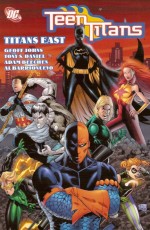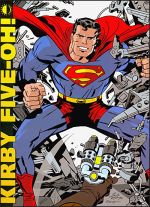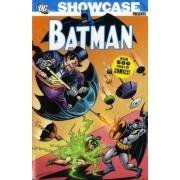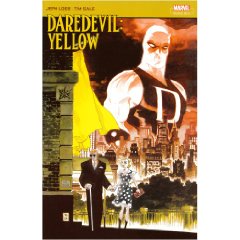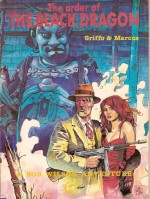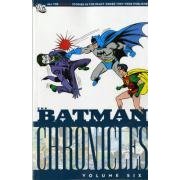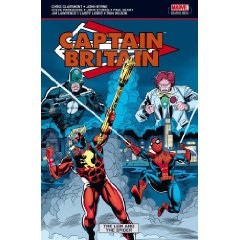
By various (Marvel/Panini UK)
ISBN13: 978-1-84653-401-0
In this third volume collecting the complete adventures of Marvel’s Greatest British super-hero we see the end of his initial run from Super Spider-Man & Captain Britain Weekly # 239-247, continue with the good Captain’s first American tour in Marvel Team-Up #65 and #66 and latterly begin reprinting the seminal fantasy strip he shared with the Black Knight in Hulk Comic Weekly. I fear that as with any decent British hero, the publishing history and back-story has to be as complicated as the Gordian Knot to satisfy our inherent sense of the absurd…
By the time of Super Spider-Man & Captain Britain Weekly # 239 the writing was on the wall. In the best tradition of British comics, a merger of two titles inevitably led to the eventual disappearance of the one after the “&”. Moreover it was clear that the US department responsible for these 6-7 page segments (Editors Larry Lieber and Danny Fingeroth, writer Jim Lawrence and art-team Ron Wilson, Pablo Marcos, Fred Kida and Mike Esposito) were devoting less and less creative enthusiasm – if not effort – to the dying feature.
‘Five Tickets to Terror’, ‘To Shrink in Fear!’, ‘…A Madman’s Whim!’ and ‘Hell Island Climax!’ (# 239-242) detail how the Captain and a plane-load of travellers became the diminutive captives of a mutated madman on a tropical island, whilst the last saga from issues #243-247 ends the English adventures on a relative high-note in a deadly, extended duel with a super-assassin and assorted monsters beginning with ‘When Slaymaster Strikes!’, ‘Dogfight with Death!’, ‘While London Gapes in Horror!’, ‘Tunnels of Terror!’ and concluding with ‘The Devil and the Deep!’ The stories had become increasingly slap-dash, an uncomfortable blend of Marvel House Style and Fleetway generic drama, which couldn’t help but disappoint.
When the Captain reappeared it was in the comfortable style – and home – of the company’s greatest triumphs. ‘Introducing Captain Britain’ by the hero’s original scripter Chris Claremont, appeared in Marvel Team-Up #65, illustrated by John Byrne and Dave Hunt, and found Brian Braddock, on student transfer to New York the unsuspecting house-guest of Peter Parker, the Spectacular Spider-Man. Before long the heroes had met, fought and then teamed-up to defeat the flamboyant hit-man Arcade.
The original US tale concluded in #66 with ‘Murderworld’ and the entire story is reprinted here in full-colour. As a temptation for Marvel completists however, I should mention that when reprinted in Super Spider-Man & Captain Britain Weekly #248-253, the story was divided into six parts and the necessary extra four splash-pages (by Byrne & Hunt and Wilson & Esposito, it looks like) are included here in historically accurate monochrome.
And then the Lion of Albion disappeared on both sides of the pond until March 1979, when a new British weekly, Hulk Comic, debuted with an eclectic mix of Marvel reprints that veteran UK editor Dez Skinn felt better suited the British market. There were also a number of all-new strips featuring Marvel characters tailored, like the reprints, to appeal to UK kids. The Hulk was there because of his TV show, Nick Fury (by babe-in-arms Steve Dillon) – because we love spies here, and the all-original pulp/gangster thriller Night Raven was by David Lloyd, John Bolton and Steve Parkhouse. And then there was The Black Knight.
This last appeared in issues #1 and 3-30 (all of which are included in this volume) plus #42-55 and #57-63 when the comic folded (and for which we must await a fourth volume). The Black Knight was a sometime member of the super-team The Mighty Avengers but in this engrossing epic, costumed shenanigans are replaced by a classical fantasy saga set in modern Britain with Tolkien-esque or perhaps Alan Garner overtones and Arthurian/Celtic roots.
Dispatched on a mission by Merlin (sometimes Merlyn here) to the wilds of Cornwall the Knight and his winged horse Valinor must battle to save the Heart and Soul of England from Modred and a host of goblins and monsters with the aid of a broken amnesiac Captain Britain.
Delivered in three-page, black and white episodes by writer Parkhouse and John Stokes (joined from #6 by penciller Paul Neary) this fantastical pot-boiler captured the imagination of the readership, became the longest running original material strip in the comic (even The Hulk itself reverted to reprints by #28) and often stole the cover spot from the lead feature.
It’s still a captivating read, beautifully realized, and the only quibble I have is that the whole thing isn’t included here. If you’re wondering, the sword-and-sorcery action ends on a cliffhanger with our heroic Captain about to regain his long-lost memories…
With the inclusion of a few pages of fascinating character designs this third volume of the chronicles of Captain Britain is a mostly wonderful mixed bag of comic delights that will charm the nostalgic and perhaps kindle the interest of newer fans of the outlying regions of the Marvel Universe. And let’s hope the next volume’s not long in coming…
© 1977, 1978, 1979, 2009 Marvel Entertainment, Inc. and its subsidiaries, licensed by Marvel Characters, Inc. All Rights Reserved. (A UK EDITION FROM PANINI UK LTD)



